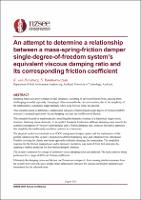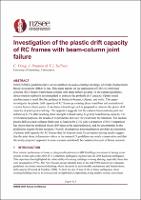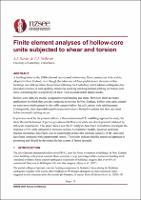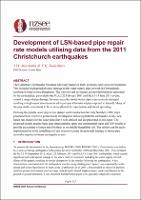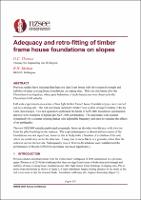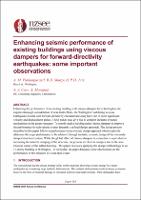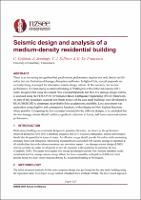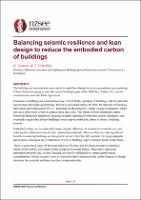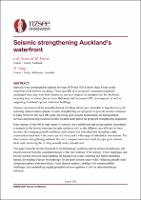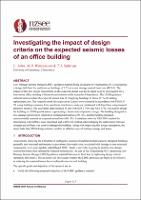Search
Now showing items 21-30 of 44
An attempt to determine a relationship between a mass-spring-friction damper single-degree-of-freedom system’s equivalent viscous damping ratio and its corresponding friction coefficient
(New Zealand Society for Earthquake Engineering, 2021-04-14)
Damping forces are always present in real structures, occurring in several different forms, making them challenging to model expressly. Damping is often assumed to be viscous in nature, due to the simplicity of the ...
Investigation of the Plastic Drift Capacity of RC Frames with Beam-Column Joint Failure
(New Zealand Society for Earthquake Engineering, 2021-04-14)
MBIE/NZSEE guidelines have various methods to assess existing buildings, of which Displacement Based Assessment (DBA) is one. This paper reports on the application of DBA to reinforced concrete (RC) frames where beam-column ...
Finite Element Analyses of Hollow Core Units Subjected to Shear and Torsion
(New Zealand Society for Earthquake Engineering, 2021-04-14)
A building boom in the 1980s allowed pre-stressed hollow-core floor construction to be widely adopted in New Zealand, even though the behaviour of these prefabricated elements within buildings was still uncertain. Inspections ...
Developing LSN-based pipe repair rate functions utilising data from the 2011 Canterbury earthquakes
(New Zealand Society for Earthquake Engineering, 2021-04-14)
The Canterbury Earthquake Sequence adversely impacted built, economic and social environments. This included widespread physical damage to the water supply pipe network in Christchurch, resulting in long service disruptions. ...
Adequacy and Retro-Fitting of Timber Frame House Foundations on Slopes
(New Zealand Society for Earthquake Engineering, 2021-04-14)
Previous studies have indicated that there are significant issues with the structural strength and stability of many existing house foundations on sloping sites. This was confirmed after the Christchurch earthquakes, where ...
Enhancing seismic performance of existing buildings using viscous dampers for Forward-Directivity Earthquakes – The Challenges
(New Zealand Society for Earthquake Engineering, 2021-04-14)
Enhancing the performance of an existing building with viscous dampers for a Wellington site requires thorough consideration of near-fault effects, the Wellington Fault being so close. Earthquake records with forward-directivity ...
Seismic Design and Analysis of a Medium Density Residential Building
(New Zealand Society for Earthquake Engineering, 2021-04-14)
There is an increasing recognition that good seismic performance requires not only checks on life-safety but also limitation of damage, disruption and losses. In light of this, several proposals are currently being developed ...
Balancing seismic resilience and lean design to reduce the embodied carbon of buildings
(New Zealand Society for Earthquake Engineering, 2021-04-14)
The building and construction sector needs to make big changes to reduce greenhouse gas emissions if New Zealand is going to meet the legally binding targets of the 2019 Zero Carbon Act, and its commitments under the Paris ...
Seismic Strengthening Auckland's Waterfront
(New Zealand Society for Earthquake Engineering, 2021-04-14)
Seawalls were constructed in sections between 1879 and 1925 to form Quay Street on the waterfront of Downtown Auckland. These seawalls have essentially remained structurally unchanged since they were first constructed and ...
Investigating the impact of design criteria on the expected seismic losses of an office building
(New Zealand Society for Earthquake Engineering, 2021-04-14)
Low Damage Seismic Design (LDSD) guidance material being developed by Engineering NZ is considering a design drift limit for multi-storey buildings of 0.5% at a new damage control limit state (DCLS). The impact of this new ...

